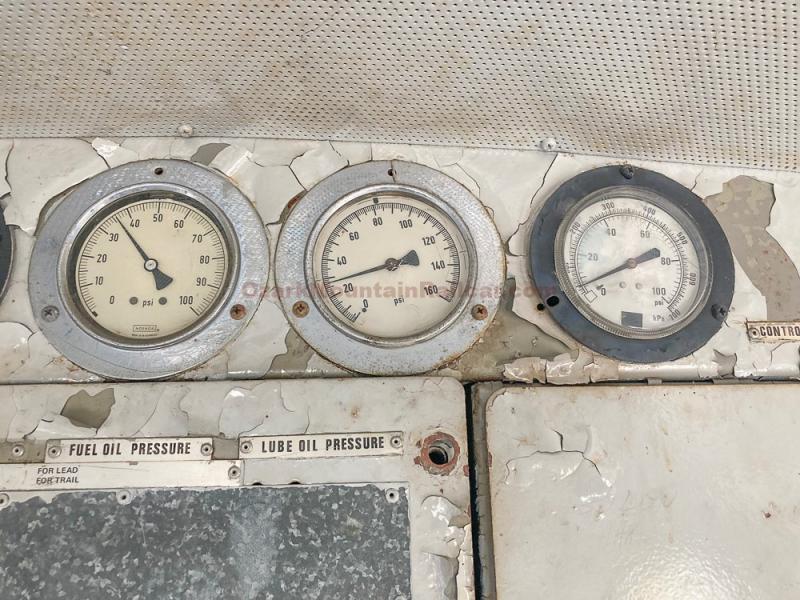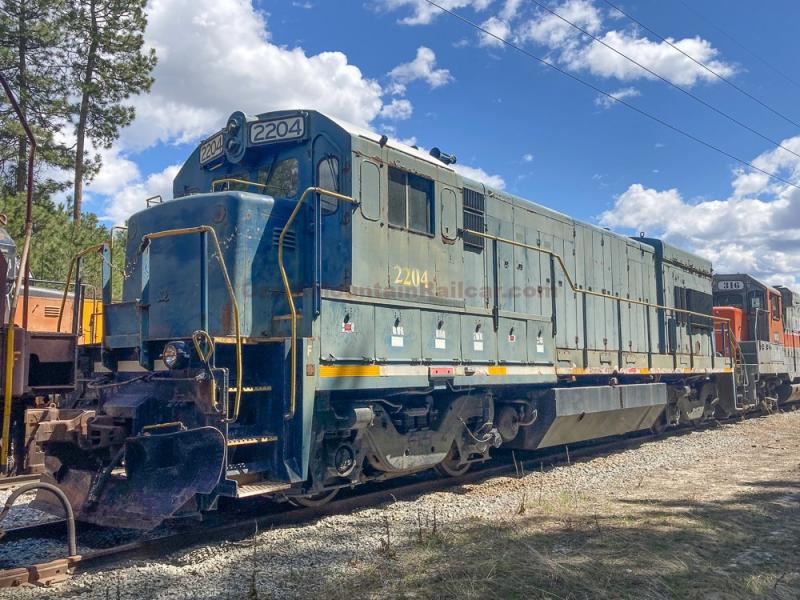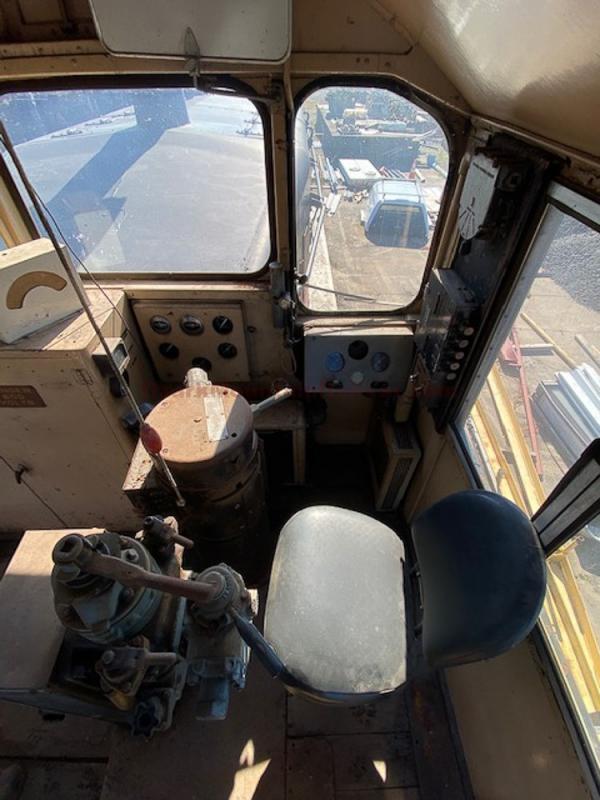Built by General Electric in 1977 for Conrail as one of the last U23B locomotives. #2204 is equipped with 7FDL12 four stroke prime mover, air cooled Gardner-Denver compressor (coupling has a bit of a wobble when running), new oil, some surface rust on body, GTA 11 main alternator, GY 27 aux alternator, electrically this unit is ver similar to a B-23-7, 752-AE traction motors, last in service in 2018, has been Blue Carded, 26-L brake valves, GE FB-2 trucks, all wheels in profile, needs a control air pressure regulating valve replaced (on back order from Wabtec), unit is in operating condition and has alighment control couplers. Originally built as Conrail 2795, serial number 41590, order number 1412. Former Providence & Western and PRL 2204.
Left side wheel rim thickness (front to rear)
(front to rear, in 1/16"): 34; 30; 20; and 24.
Locomotive Shipping FAQ
Q- What does it cost to ship a locomotive by rail?
A- To ship a locomotive by rail, it will need to have roller bearings, alignment control couplers, serviceable wheels, UMLER registration, reporting marks, number and AEI tags installed. The average cost to prep will depend on the physical characteristics of the locomotive but will average between $5,000- $8,000+. Each railroad will have their own individual tariff for moving dead (out of service) locomotives and the average tariff will range between $5.000 per mile to $20.00 per mile.
Q- What does it costs to ship a locomotive by flat car?
A- Shipping a locomotive by flat car is often a viable option if the locomotive is older or has friction wheel bearings. As with any shipping, it will depend on the miles between origin and the destination since all shipping is calculated by mileage. The advantage to a flat car, is that if the locomotive has a mechanical problem enroute and if the railroad does not have the parts to repair. It will get bad ordered and you will be responsible to have someone go to where the unit is and repair onsite. When shipping by flat car, you do have the added cost of a crane and the rental of the flat car. But you have the assurance that the locomotive's physical attributes will not interfere with the movement of the unit.




















